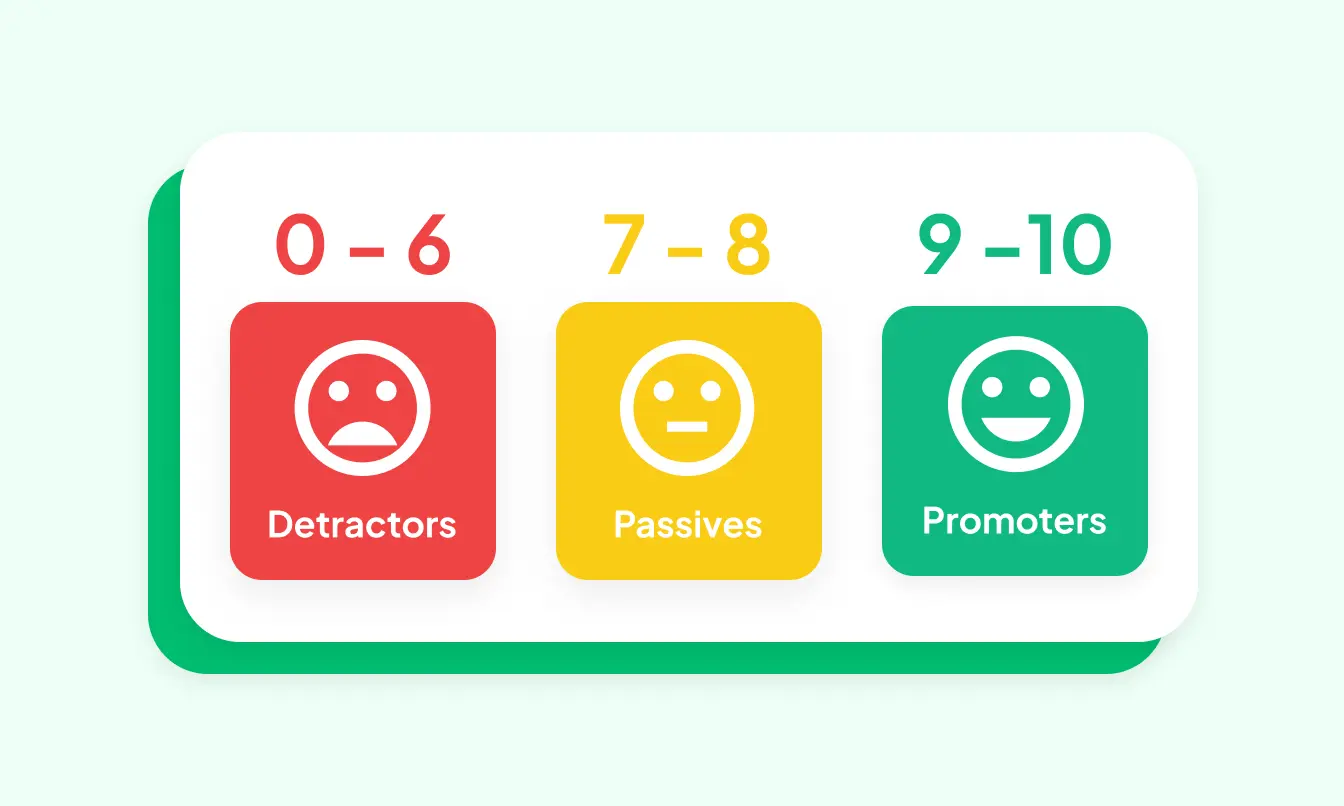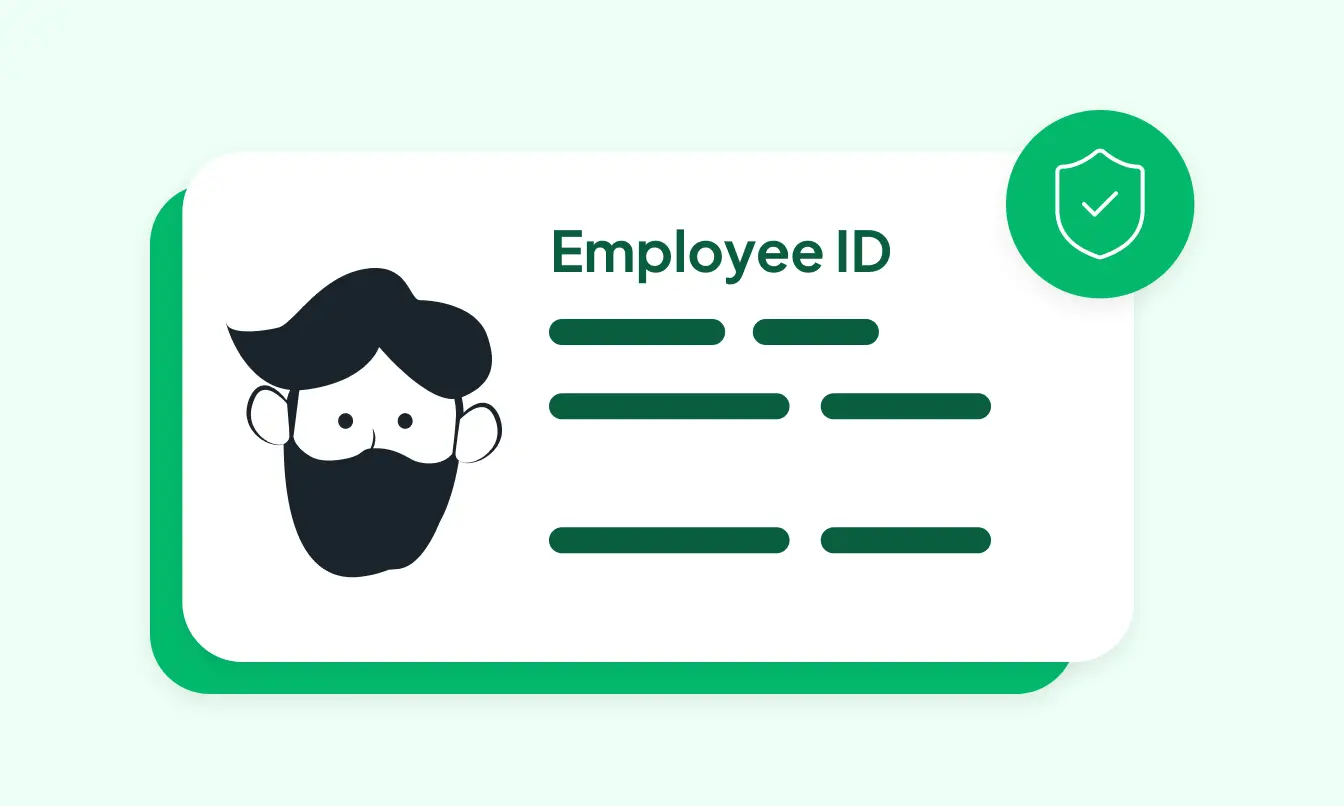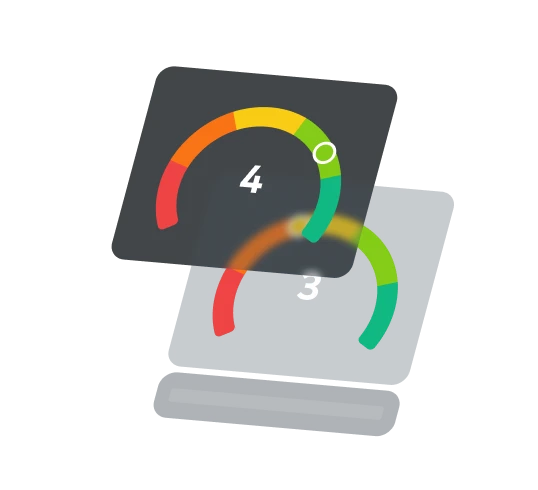
How To Calculate The Employee Net Promoter Score: What is a Good Score?


- eNPS Formula
- What Is Considered a “Good Score” In The eNPS System?
- What’s the relationship between an eNPS and your organization?
- How To Get A Good eNPS Score
- To Sum Up
eNPS, or the employee net promoter score, is a measuring tool designed to assess the satisfaction and loyalty of a company's employees.
The score of this system shows how likely your employees are to recommend your organization as a workplace. If you’re wondering about your organization’s work culture, this article helps you find answers.
We have provided 5 simple tips to boost your eNPS score and have a highly positive and engaged team.
The typical eNPS survey consists of one question: On a scale of 0 to 10, how likely are you to recommend your company as a workplace to others?
Based on the responses, we divide employees into three categories:
- Promoters (9-10) who are the most likely to advocate for your organization.
- Passives (7-8) who are neutral and generally satisfied with their workplace. Note that given specific circumstances, they can turn into Promoters or Detractors.
- Detractors (0-6) who are not pleased with their company.

But how would you know whether your company’s score is satisfying? Are you on the right track? How should you exploit the eNPS formula?
We will explore the answers to these questions in this article to better understand eNPS system calculation.
The employee net promoter score is vital to measure your company’s work culture. By reading our article “What is the eNPS?” you will have a more thorough understanding of its advantages to your company.
Our Employee Survey Systems allow you to have specifically designed eNPS surveys to serve your company’s needs.
eNPS Formula
The eNPS score equals the percentage of Promoters minus the percentage of Detractors. In this equation, we leave out the percentage of Passives, no matter how big this group is.
eNPS = Promoters% - Detractors%

The score varies between -100 (the worst) and +100 (the best).
A higher number indicates more promoters and an excellent overall situation for the company.
A lower number shows more detractors and potential issues within that organization.
Here is an example:👇
Ten replies are being provided to an eNPS survey. The responses are
8,7,10,9,6,7,7,8,9,5,
Which indicate:
2x Detractors ☹️ (6,5) = 20%
5x Passives 😐 (8,7,7,7,8) = 50%
3x promoters 😄 (10,9,9) = 30%
By subtracting the percentage of detractors from the percentage of promoters, we get the eNPS score.
The eNPS score for that company on that day is calculated below:
30% - 20% = +10

Note that the eNPS number is not read as a percentage.
Even though the passive employees form the majority in this example, we should disregard them and continue with the formula.
Analysis: The number is positive and, therefore, acceptable. But do you think it ends there? Absolutely not!
Looking at the gathered data, most of the employees are Passives. Besides, considering the total number of employees and the high ratio of Detractors to Promoters, the organization needs to do some work to improve.
For this situation, we suggest you apply follow-up questions in your eNPS survey, especially for Detectors and Passives.
By addressing the possible issues of those groups of employees (whether they are unhappy with poor benefits, lack of communication, or an uncomfortable environment), you can upgrade the total status of your organization.
If you are doubtful about what kind of questions fit your company better or are shy of follow-up questions that match your status, you can read our article “eNPS Survey Questions” to better grasp the matter.
You can also contact us at agyleOS for a consultation or even to have an exceptionally designed eNPS question template that suits your organization’s needs.
What Is Considered a “Good Score” In The eNPS System?
To be perfectly candid, the company itself sets the bar for a “good” score. It is not wise for us to apply the same standard to every existing organization regardless of their size and industry.
Some might argue that there is no “good” score per se. Depending on your industry, how staff feel about their workplace can sometimes be unpredictable.
For example, healthcare companies tend to have lower eNPS scores than IT organizations due to job requirements, work environments, benefits, etc.
Each company has its specific environment; the given eNPS should match the current state of each company.
Comparing your organization’s eNPS scores to other companies or industries is inefficient. In other words, the most important score for a company to compare is its own previous records, not the ones of competitors.
What’s the relationship between an eNPS and your organization?
eNPS is an essential test to evaluate your employees’ experience and well-being. Being the leader of a company, you should revoke any previous expectations and embrace all the feedback you can get.
There might be a time you get a low score without any prior warning; we are here to tell you that is not the end of this story.
Average Or Low eNPS Scores: How To Improve?

A lower eNPS score may appear alarming or even scary.
Still, it doesn’t necessarily mean your organization is terrible if your company has received a lower eNPS result than you desired.
Firstly, you should know that factors affecting the employee experience are diverse, including salary, paid overtime, room for professional growth, etc. Besides, research has shown that the eNPS results depend on several other circumstances:
- Whether the company is public or private
- Whether the company is undergoing leadership restructuring
- The economic climate
- The growth rate of the company
- The industry
To address the existing issues impacting the eNPS results, organizations must know a few facts:
- The employee benefits should be compatible with each individual; for example, transportation services are more important to employees with a long commute than those who work primarily from home.
- eNPS results frequently change due to the subjective opinion of employees. A company should hold eNPS surveys regularly to keep track of its scores and take the necessary actions to improve in between.
- eNPS scores change dramatically amid an administration change. A new leadership can cause all sorts of changes in the employee experience.
- An organization must have the essential eNPS scores during this time to make the right leadership decisions.
eNPS Scores That Are “Good”: What Do They Imply?
As mentioned earlier, a good score is as close to +100 as possible. But to look at the matter more realistically, any score above zero is promising and acceptable.
There are some typical but not definite classes of eNPS results for a company:
🙄 Acceptable or promising (0 to +10):
As described, any score above zero puts you in the clear zone!
The fact that the number of Detractors doesn’t outweigh the number of Promoters is promising.
Organizations with an eNPS score between 0 and 10 have the potential to do better regarding their employee experience.
😌 Good (+10 to +50):
If your company receives a score between 30 and 50, you have an overall positive organization, but there’s room for improvement.
You can achieve more productivity by increasing employee engagement.
😀 Excellent (+50 to +70):
If your company’s score falls between 50 and 70, your organization does an excellent job.
By enhancing the situation for Promoters and meeting the needs of Passives and Detractors, you can grow to be an exceptional organization.
🥰 Exceptional (above +80):
Any company with an eNPS score above 80 is considered one of the best organizations, regardless of its industry.
How To Get A Good eNPS Score
A good eNPS score shows that value, engagement, and respect are mutual manners in an organization.
A company that values and respects its employees will have more engaged workers and thus benefit from higher productivity.
Whether your company has had a history of high eNPS results, or you have never done any eNPS survey (or any other employee survey), or even if your organization has received some low eNPS results recently, we are here to give you some tips on how to improve your situation to reach out for the best results.
Some best practices for you to follow if you want a productive and engaged workplace:
1. Encourage honesty and transparency
You can only receive constructive feedback when your employees know they have job safety.

2. Recognize and reward the good work.
Let your employees know you care about their critical thinking and creative actions.
3. Understand their needs.
Some employees have issues such as rigid work hours, low salaries, etc.
4. Keep the feedback mutual.
If you give your employees your constructive opinion, they appreciate it and will work harder to fix the issue.
5. Advocate teamwork.
Two heads are better than one! A healthy environment to share and discuss ideas makes everyone grow and flourish.
Note that only some of these tips will work for your company. Every organization has its unique needs.
If you want more profound insights into your employees’ opinions about your organization, you should conduct a customized eNPS survey with a user-friendly interface to get maximum responses.
Only then you can start planning strategies to boost your workplace into an organization with a high rate of retention and productivity.
At agyleOS, we help you connect with your employees through Online Kudo Wall and hold customized and user-friendly eNPS surveys to enhance your company’s brand.
To Sum Up
eNPS results indicate how much a company values and respects employees and shows their engagement.
Each company’s eNPS result requires a different analysis depending on the company’s current status.
However, if a company wants to improve its eNPS, regardless of where it stands on the chart, it should start paying attention to the employees and the Human Resources activities.
Holding eNPS surveys is one of the ways to have an objective opinion about how your employees feel about their workplace.
By submitting this form, I confirm that I have read the privacy policy and that I consent to the processing of my personal data by agyleOS for the purposes stated. In the event of consent, I can revoke my consent at any time. Furthermore, by submitting the form, I agree to the general terms and conditions.


- Product
- Resources
- Compare
- Company
